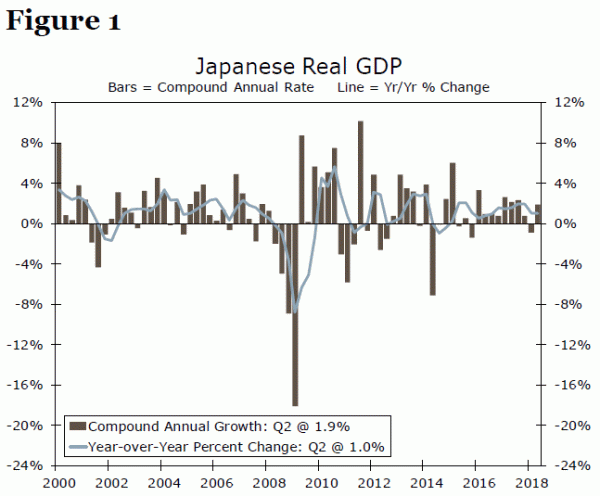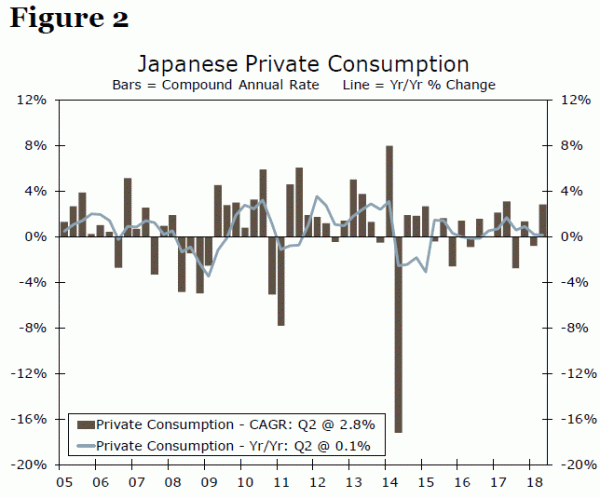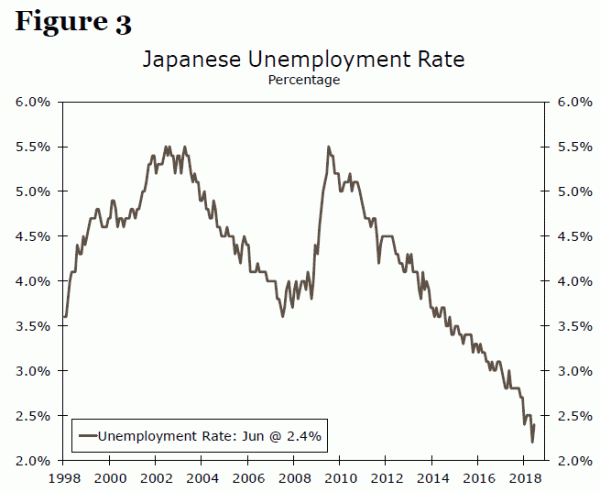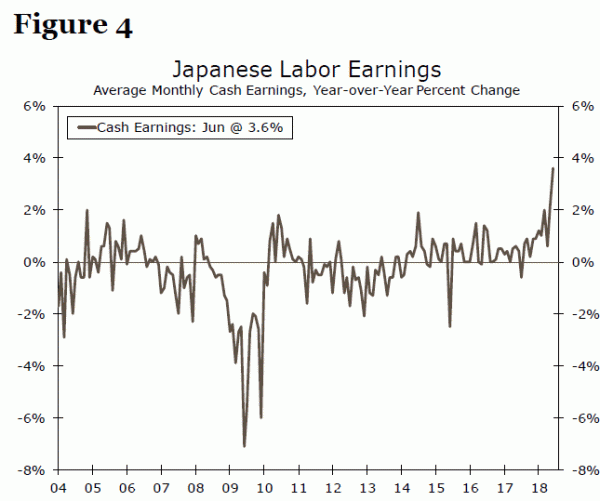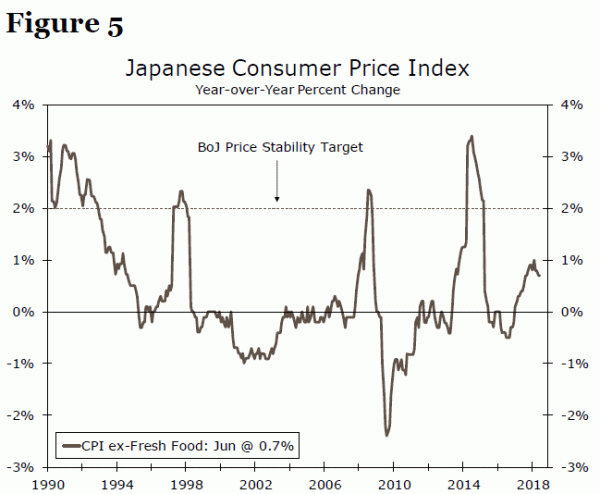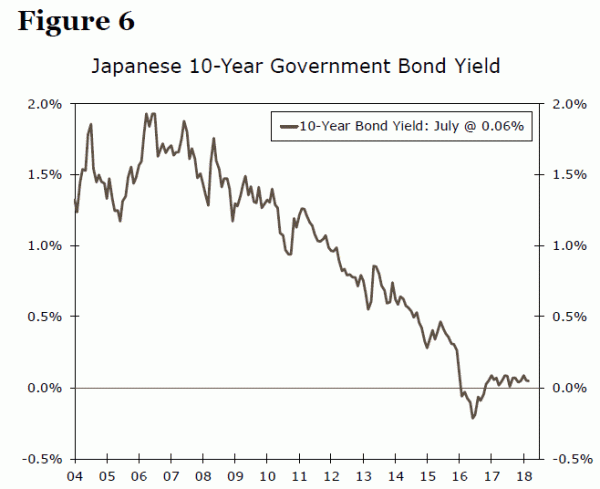Executive Summary
Even as many of the world’s major central banks have been steering toward normalization of monetary policy, the Bank of Japan (BoJ) has remained a holdout. The GDP report for the second quarter offers nothing that will compel BoJ policymakers to change course. That said, there are incremental changes going on in the Japanese economy, which combined with some logistical constraints on the viability of continuing central bank balance sheet expansion forever, may eventually warrant a change in forward guidance from the BoJ. In this special report, we unpack the latest GDP data and consider how some of these small changes may eventually allow the BoJ to let up on the gas after years of having the accelerator stomped to the floor. The most consequential factor in our view is the extent to which recent wage gains will be sustained and whether that will pass through to a broader push to sustained inflation at, or near, the 2.0 percent target.
After Soft Start, Much Better Growth in Japan in Q2
Real GDP growth in Japan came in at a 1.9 percent annualized rate in the second quarter, although revisions to previously-reported numbers showed the contraction in the first quarter was slightly larger than first thought (Figure 1). Still the outcome in the second quarter was better than expected, and alleviates concern that Japan’s economy was in trouble.
Consumer spending rebounded in the quarter, growing at a 2.8 percent annualized rate (Figure 2). The resurgence of the Japanese consumer of late has been a pleasant surprise. Department stores in Tokyo reported 6.9 percent year-over-year sales growth in June—that is the biggest yearly gain in about three years.
The more robust consumer spending comes with a bit of a tradeoff in the GDP accounting: more consumer spending is often associated with faster import growth. That was certainly the case in the second quarter as Japanese imports grew at a 3.9 percent clip. Exports eked out a scant gain, but not nearly enough to offset the pick-up in imports. The contribution from trade as a whole was a drag of half a percentage point.
The BoJ’s ultra-accommodative monetary policy is intended to spur inflation to the Bank’s 2.0 percent target. That has been an elusive goal throughout most of the current cycle partly because even though Japanese businesses report strong profits, there has been only modest willingness to put that capital to use. That may be changing.
After six straight quarters in which firms have only gradually increased spending, business investment grew at a 5.2 percent annualized rate, the fastest pace since Q4-2016. This uptick in spending was large enough to add 0.8 percentage points to GDP—more than enough to fully offset the drag from net exports during the period. A continuation of slow inventory growth added another two tenths of a percent to GDP as well.
Tight Labor Market Lending BoJ a Hand
For the BoJ, the more vexing consideration about business spending from a policy standpoint is to what degree businesses will pass on increased profits to employees in the form of higher wages. The unemployment rate ticked up a notch in June amid trend improvement in participation. Still, it remains among the lowest jobless rates for any advanced economy at just 2.4 percent (Figure 3).
The tight labor market is at last compelling businesses to do what years of pleading from policymakers could not: it is making them pay people more. Average monthly cash earnings, which have been stuck in neutral for years, are finally picking up. The year-over-year growth rate of monthly cash earnings is up 3.6 percent (Figure 4). Workers in Japan have only rarely seen earnings growth of more than 2 percent in the past 20 years and 3.6 percent for June is the fastest year-over-year growth in earnings since 1997.
Inflation in Japan may already be getting a slight (and welcome) push from bigger wages. The year-over-year rate of CPI inflation in June firmed to 0.7 percent (Figure 5). That is still well-below the BoJ’s 2.0 percent target, but it is a step in the right direction, if only an incremental one. There is a CPI series for just the Tokyo market that comes out earlier than the broad CPI inflation measure. It is such a good predictor that we use that Tokyo version in our model for national CPI. The 0.9 percent print for Tokyo CPI inflation in July augers well for another notch or two higher in the broader CPI inflation rate for July.
Outlook for the BoJ
At its July 31 meeting, the BoJ held interest rates steady and maintained its comprehensive program of monetary policy support. Remaining dovish on forward guidance, the BoJ stated that it “intends to maintain the current extremely low levels of short- and long-term interest rates for an extended period of time”. It had already dropped any reference to a timeline for achieving its 2.0 percent inflation target, although Governor Kuroda affirmed multiple times that the removal of the date was not in any way an indication of monetary policy bias.
Dynamics in the Japanese economy can be a game of inches rather than yards and that is true of monetary policy as well. As a case in point, consider this: the BoJ made clear that it would allow the yield on the benchmark 10-year Japanese Government Bond (JGB) to move as much a 20 basis points on either side of its zero yield target (Figure 6). This followed rumors in weeks leading up to the meeting that the BoJ might announce plans to remove accommodative policy in one way or another.
This carefully calibrated move to allow some variability in the 10-year JGB yield is not a change in the BoJ’s policy stance, but when the water is completely still, even the slightest ripple bears mention.
We do not see BoJ policy being materially impacted by today’s GDP report, and we expect that the very modest growth which has characterized the past few years will return in the quarters ahead. If there is a factor likely to influence the BoJ to adjust its forward guidance, it is the extent to which the incipient rise in wages translates into sustained CPI inflation.




